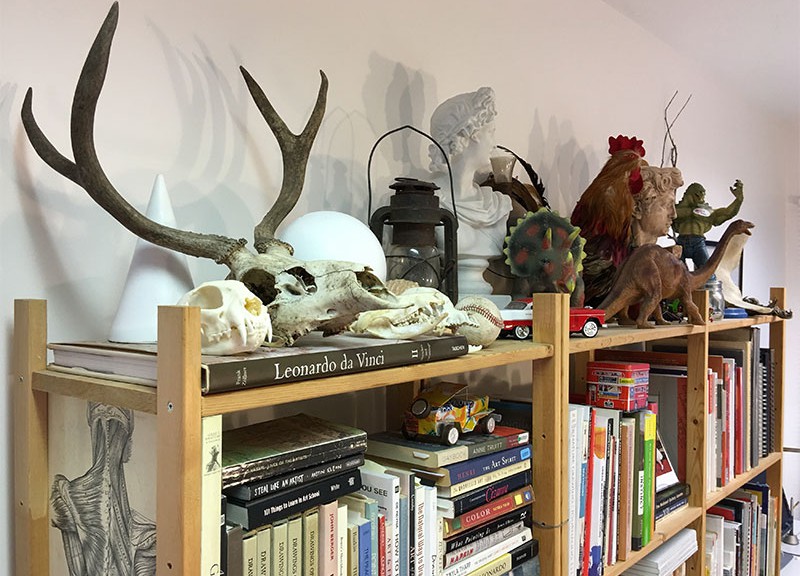While paging through Charles Bargue’s Drawing course book, Scout’s eyes lit up as we came upon the print of the plaster cast torso.
“It even has block-in lines!” she said enthusiastically, referring to the angled directional lines that would help her depict weight distribution of the figure’s muscles. We promptly bookmarked the page as the subject for her drawing session.

Choosing a subject to draw is an important aspect of the drawing experience. Your subject should strike an emotional chord that stimulates your eye, builds your skills, and fits your purpose for drawing.
Sometimes I wonder, do we choose our drawing subjects, or do they choose us?

Master drawing teacher Juliette Aristides has a lyrical take on the subject. “When I look at my subject I often ask myself, “What is beautiful about what I am seeing? Is the quality of the light special? Is there a repeating shape or angle?”

Sarah Simblet, who teaches at the Ruskin School of Drawing at Oxford University, weighs in on the importance of matching your emotions and materials with what you draw. “As you draw any subject—something you see, feel, or imagine—it is not to only render its shape, size, and position in space. You must also think of its intrinsic nature: its purpose, meaning, and how it feels to the touch.”

Simblet writes, “As your hand meets the paper to make a mark, it should be responding to the sensation and meaning of the subject it draws. If you can do this, your marks will become the subject on the paper. This is the alchemy of drawing.”
If we are drawing alchemists, then mixing together what we see and feel can become our own personal impression and expression of our subjects.


Whether drawing from life or books, it is important to choose subjects that help you learn to measure proportions or improve specific techniques. That is why I prepare lesson subjects that match students’ interests as well as challenge their levels of ability.
But we sketchers can be a moody lot. So, I am always ready to change a lesson’s subject matter to fit what a student is thinking or feeling at the moment, keeping their focus on what they are drawing. Because, as Juliette Aristides says, “By crystallizing your thoughts or emotions about your subject you can help keep your passion and enthusiasm through the process.” And that is why we choose the things we draw.





Rob Court
Latest posts by Rob Court (see all)
- Drawing With Friends - April 11, 2022
- Frozen in Time: Cellphone Users as Models to Draw - April 8, 2022
- Getting Out & Getting Real - June 20, 2021
- Life Lines: Sketching the Unseen World of Movement - June 20, 2021
- The Ups & Downs of Urban Sketching - May 9, 2021
